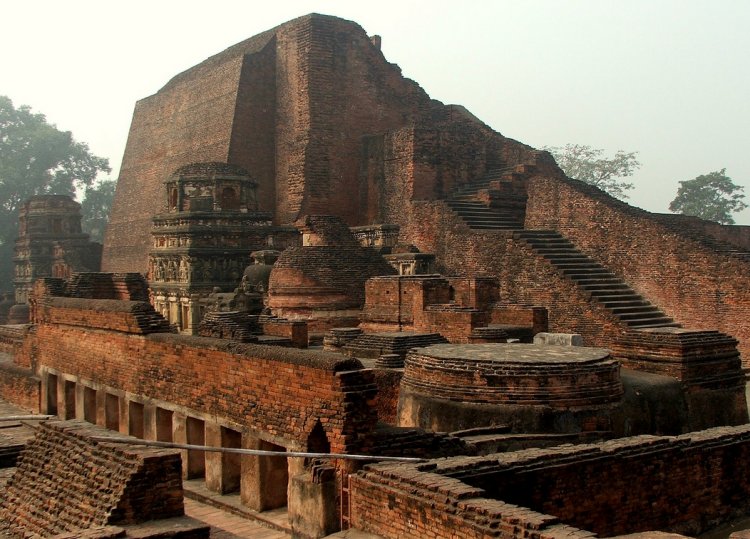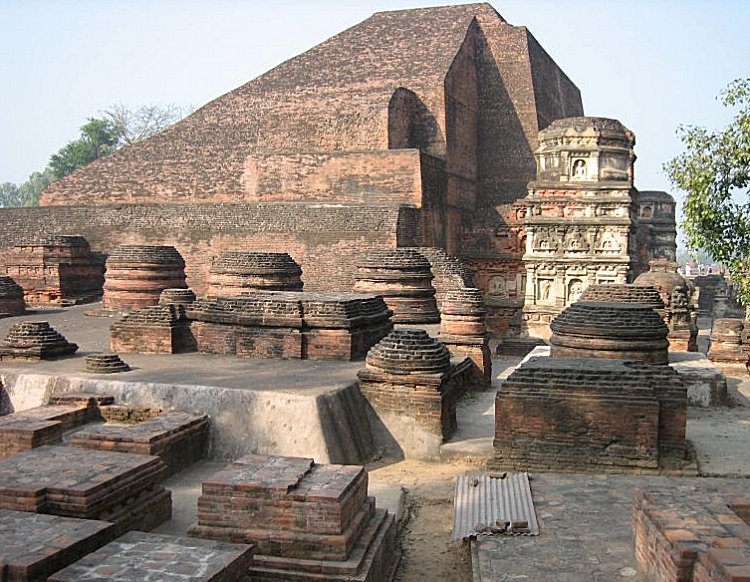Nalanda – One Of The Most Praised Learning Centers And Masterpiece Of Ancient World
A. Sutherland - AncientPages.com - Nalanda was one of the most praised, intellectual circles of the ancient world.
It was an active center of education located about 88 km south-east of Patna in Bihar, northeastern India, and not far from what is today the southern border of Nepal.
Scholars came from all over the world to study philosophy, medicine, astronomy, and other subjects. Credit: myself - CC BY-SA 2.5
Based on historical sources, we can say that the Nalanda University - supported by the Hindu Gupta rulers, Buddhist emperors like Harshavardhana as well as the later Pala Emperors - had a long and celebrated life that lasted almost continually for 800 years from the 5th to 12th century AD.
By the time the first European university was established in Bologna in 1088, Nalanda had been providing higher education to thousands of students from Asian countries for more than six hundred years.
The university was an architectural and environmental masterpiece. It had eight separate compounds, 10 temples, meditation halls, classrooms, lakes, and parks.
It had a nine-story library where monks meticulously copied books and documents so that individual scholars could have their own collections. It had dormitories for students, perhaps a first for an educational institution, housing 10,000 students in the university’s heyday, and providing accommodations for 2,000 professors.
Conjectural Reconstruction of Temple no. 3, Nalanda University. Image credit: Percy Brown (1872-1955) - "Indian Architecture, Buddhist and Hindu", published in 1956 Bombay, India. First published in India in 1900. Public Domain
Nalanda was also the most global university of its time, attracting pupils and scholars from Korea, Japan, China, Tibet, Indonesia, Persia, and Turkey. Students and scholars came to the university to learn and teach.
The university’s library "Dharmaganja" ("Treasury of Truth") and Dharma Ghunj ("Mountain of Truth") had hundreds of thousands of texts.
During the period of its greatest popularity, Nalanda University was celebrated as the world's largest collection of Buddhist literature, with supportive followers admiring the university’s greatness and new philosophies.
Credit: Prince Roy - CC BY-SA 2.0
A great fire wiped out the library of over 9 million manuscripts and at the beginning of the 12th Century, the Muslim invader Bakhtiyar Khalji sacked the university.
In the 1860s the great archaeologist Alexander Cunningham identified the site as the Nalanda University and in 1915/1916 the Archaeological Survey of India began excavations of the site.
Today, Nalanda is one of the most visited historical and architectural landmarks of India.
In 2006, the countries of China, India, Singapore, and Japan proposed a plan to revive and restore the ancient ruins of the Nalanda International University. The new venture is meant to be a revival of Nalanda.
After 800 years, the great learning center was formally inaugurated on 19 September 2014. Classes began at Nalanda University - after centuries of silence.
The powerful vision behind Nalanda to continue the great tradition is important for India, Asia, and for the rest of the world.
Updated on April 5, 2022
Written by – A. Sutherland AncientPages.com Staff Writer
Copyright © AncientPages.com All rights reserved. This material may not be published, broadcast, rewritten or redistributed in whole or part without the express written permission of AncientPages.com
Expand for referencesMore From Ancient Pages
-
 Mount Ararat Was Once Located By The Sea – Study Of Palm Leaves Reveals
Archaeology | Jul 18, 2020
Mount Ararat Was Once Located By The Sea – Study Of Palm Leaves Reveals
Archaeology | Jul 18, 2020 -
 Letters Reveal How Ancient Egyptians Argued With Friends And What Angered Them
Civilizations | Oct 18, 2020
Letters Reveal How Ancient Egyptians Argued With Friends And What Angered Them
Civilizations | Oct 18, 2020 -
 Has The Mystery Of The Hobbits Finally Been Solved?
Archaeology | Apr 21, 2017
Has The Mystery Of The Hobbits Finally Been Solved?
Archaeology | Apr 21, 2017 -
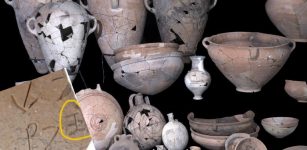 Canaanite Temple Dated To 12th Century BC Unearthed At Lachish, Israel
Archaeology | Feb 19, 2020
Canaanite Temple Dated To 12th Century BC Unearthed At Lachish, Israel
Archaeology | Feb 19, 2020 -
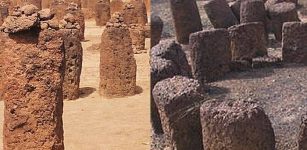 Senegambia’s Circles: Largest Cluster Of Megalithic Structures Of Lost Civilization On Earth
Featured Stories | Jan 3, 2020
Senegambia’s Circles: Largest Cluster Of Megalithic Structures Of Lost Civilization On Earth
Featured Stories | Jan 3, 2020 -
 European Bronze Age Treasure Of Villenna Has Artifacts Made Of Meteoric Iron
Archaeology | Feb 12, 2024
European Bronze Age Treasure Of Villenna Has Artifacts Made Of Meteoric Iron
Archaeology | Feb 12, 2024 -
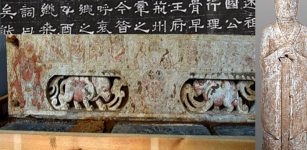 1,500-Year-Old Tomb With Patterns Linked To Zoroastrianism And Buddhism Unearthed In C. China
Archaeology | Jan 19, 2021
1,500-Year-Old Tomb With Patterns Linked To Zoroastrianism And Buddhism Unearthed In C. China
Archaeology | Jan 19, 2021 -
 Mystery Of Ancient “Magical” Mirrors – Some Of The Strangest Objects In The World
Ancient Mysteries | Apr 21, 2011
Mystery Of Ancient “Magical” Mirrors – Some Of The Strangest Objects In The World
Ancient Mysteries | Apr 21, 2011 -
 INAH Archaeologists Focus On Ancient Religious And Ceremonial Site Of Teteles Of Avila Castle, Puebla, Mexico
Archaeology | Nov 7, 2024
INAH Archaeologists Focus On Ancient Religious And Ceremonial Site Of Teteles Of Avila Castle, Puebla, Mexico
Archaeology | Nov 7, 2024 -
 When Giants Ruled North America – Giant Skeletons ‘Erased’ From History – Part 2
Ancient Mysteries | Nov 22, 2018
When Giants Ruled North America – Giant Skeletons ‘Erased’ From History – Part 2
Ancient Mysteries | Nov 22, 2018 -
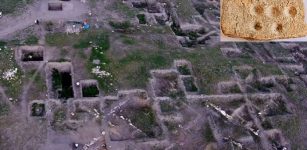 5,000-Year-Old Stone Paint Palette Unearthed In Küllüoba Mound
Archaeology | Sep 9, 2020
5,000-Year-Old Stone Paint Palette Unearthed In Küllüoba Mound
Archaeology | Sep 9, 2020 -
 Mysterious Bronze Age Burial Chamber Discovered In Devon, UK
Archaeology | May 16, 2024
Mysterious Bronze Age Burial Chamber Discovered In Devon, UK
Archaeology | May 16, 2024 -
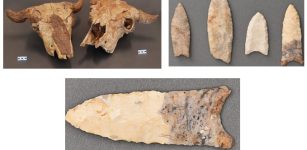 Digesta: An Overlooked Source Of Ice Age Carbs
Archaeology | Apr 24, 2023
Digesta: An Overlooked Source Of Ice Age Carbs
Archaeology | Apr 24, 2023 -
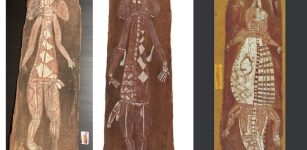 Solving The Bark Painting Mystery In Australia
Archaeology | Feb 23, 2023
Solving The Bark Painting Mystery In Australia
Archaeology | Feb 23, 2023 -
 Ancient Script Reveals Mysterious Location Of Legendary Hanging Garden Of Babylon
Featured Stories | Apr 4, 2014
Ancient Script Reveals Mysterious Location Of Legendary Hanging Garden Of Babylon
Featured Stories | Apr 4, 2014 -
 Is A Time Travel Machine Based On Secret Ancient Egyptian Knowledge Hidden In London?
Ancient Mysteries | Oct 20, 2017
Is A Time Travel Machine Based On Secret Ancient Egyptian Knowledge Hidden In London?
Ancient Mysteries | Oct 20, 2017 -
 Who Was The The Mysterious Lady Of Bietikow And What Had She In Common With Ötzi Iceman?
Archaeology | Nov 6, 2020
Who Was The The Mysterious Lady Of Bietikow And What Had She In Common With Ötzi Iceman?
Archaeology | Nov 6, 2020 -
 Spearhead Mound – Destroyed Burial Place Of Adena Giants?
Featured Stories | Jun 1, 2021
Spearhead Mound – Destroyed Burial Place Of Adena Giants?
Featured Stories | Jun 1, 2021 -
 Shu: Egyptian God Of Air, Symbol Of Life-Giving Breath And The One Who Separates Heaven From Earth
Egyptian Mythology | Oct 23, 2020
Shu: Egyptian God Of Air, Symbol Of Life-Giving Breath And The One Who Separates Heaven From Earth
Egyptian Mythology | Oct 23, 2020 -
 First Early Roman Fortlet Found On The Isle of Anglesey, North Wales
Archaeology | Nov 26, 2015
First Early Roman Fortlet Found On The Isle of Anglesey, North Wales
Archaeology | Nov 26, 2015

